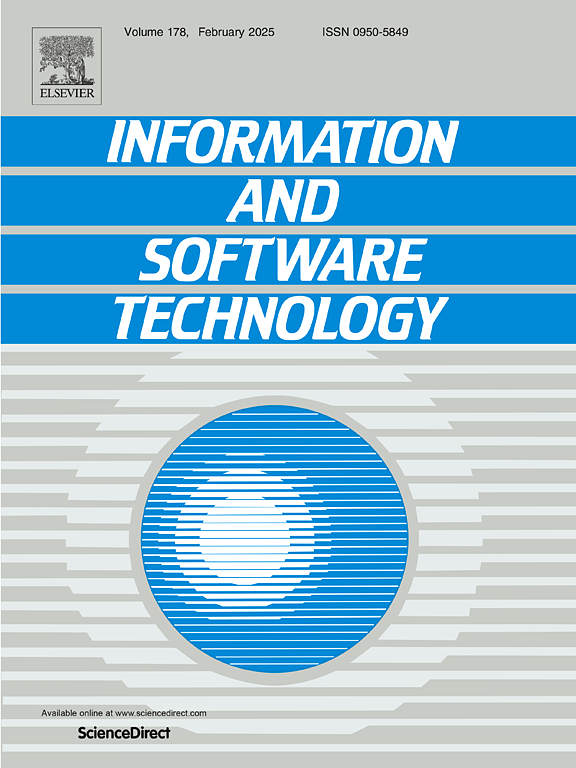代码注释生成的替代方案?从字节码生成注释
IF 3.8
2区 计算机科学
Q2 COMPUTER SCIENCE, INFORMATION SYSTEMS
引用次数: 0
摘要
上下文:由于代码注释的重要性和必要性,最近的工作提出了许多以源代码为输入的注释生成模型。但有时无法获得源代码,只能获得字节码,例如许多app。目标:如果有一种直接为字节码生成注释的方法,恶意软件检测和理解闭源软件等任务可以从生成的注释中受益,因为它提高了系统的可理解性。因此,我们提出了一种称为ByteGen的新方法来从字节码生成注释。方法:具体来说,为了提取字节码的结构特征,我们利用字节码的控制流图(CFG),并使用一种名为增强SBT的特殊遍历对CFG进行序列化。增强的SBT可以完全保留序列中CFG的结构。我们在一个数据集上进行了实验,该数据集从Maven收集了大约50,000个字节码注释对。结果:实验结果表明,ByteGen的BLEU-4平均得分为28.67,优于多个基线,一项人体研究也表明了ByteGen在从字节码生成注释方面的有效性。结论:总的来说,ByteGen的表现优于其他基线。因此,这也证明了我们的方法在没有源代码的代码注释生成场景中的有效性。本文章由计算机程序翻译,如有差异,请以英文原文为准。
An alternative to code comment generation? Generating comment from bytecode
Context:
Due to the importance and necessity of code comments, recent works propose many comment generation models with source code as input. But sometimes there has no access to obtain the source code, only the bytecode, such as many Apps.
Objective:
If there is a way to generate comments for bytecode directly, tasks such as malware detection and understanding closed-source software can benefit from the generated comment because it improves the understandability of the system. Therefore, we propose a novel approach called ByteGen to generate comments from bytecode.
Methods:
Specifically, to extract the structure characteristic of the bytecode, we utilize the control flow graph (CFG) of the bytecode and use a special traversal named enhanced SBT to serialize CFG. The enhanced SBT can completely preserve the structure of the CFG in a sequence. We set up experiments on a dataset with a scale of about 50,000 bytecode-comment pairs collected from Maven.
Results:
Experimental results show that the average BLEU-4 score of ByteGen is 28.67, which outperforms several baselines, and a human study also indicates the effectiveness of ByteGen in generating comments from bytecodes.
Conclusion:
In general, ByteGen performs better than other baselines. Therefore, this also proves the effectiveness of our approach in the code comment generation scenario without source code.
求助全文
通过发布文献求助,成功后即可免费获取论文全文。
去求助
来源期刊

Information and Software Technology
工程技术-计算机:软件工程
CiteScore
9.10
自引率
7.70%
发文量
164
审稿时长
9.6 weeks
期刊介绍:
Information and Software Technology is the international archival journal focusing on research and experience that contributes to the improvement of software development practices. The journal''s scope includes methods and techniques to better engineer software and manage its development. Articles submitted for review should have a clear component of software engineering or address ways to improve the engineering and management of software development. Areas covered by the journal include:
• Software management, quality and metrics,
• Software processes,
• Software architecture, modelling, specification, design and programming
• Functional and non-functional software requirements
• Software testing and verification & validation
• Empirical studies of all aspects of engineering and managing software development
Short Communications is a new section dedicated to short papers addressing new ideas, controversial opinions, "Negative" results and much more. Read the Guide for authors for more information.
The journal encourages and welcomes submissions of systematic literature studies (reviews and maps) within the scope of the journal. Information and Software Technology is the premiere outlet for systematic literature studies in software engineering.
 求助内容:
求助内容: 应助结果提醒方式:
应助结果提醒方式:


